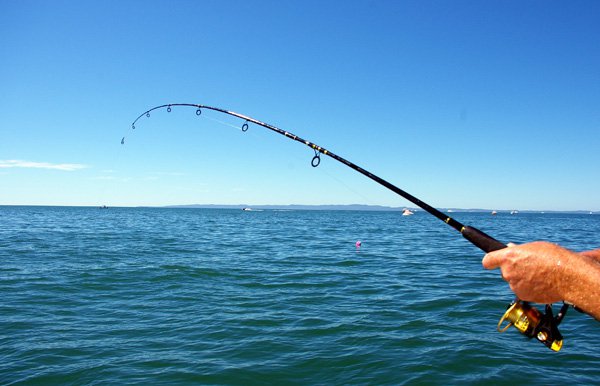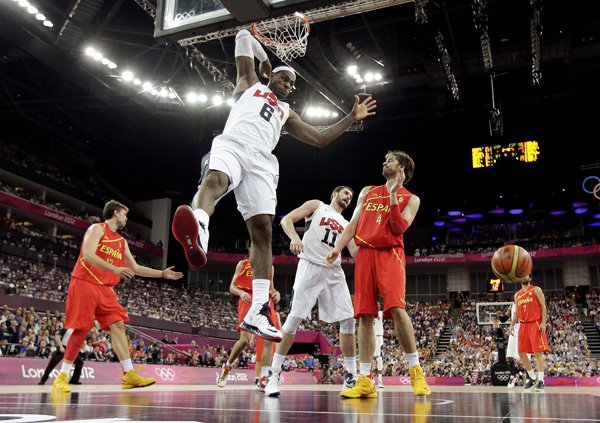Stationary Tackle
Question
Hi I'm a 6'4, 83 kg Lock from Australia playing my first year of rugby, and I usually tackle pretty well but am wondering about the correct technique for tackling low (preferably just above the knees) from a non-moving, flat footed crouch postion.
Recently I have been letting the opposition run into me, absorbing all the pressure in my shoulder before wrapping their legs and letting their momentum carry them down, but it has started taking its toll on my shoulder, as I usually pull up extremely sore the next morning.
So what I am asking is there an easier way of making these sort of tackles, such as diving into it, springing from low to high etc etc? Any help would be greatly appreciated.
-Lewis Perkins
Answer
Sir,
Here is the Shephard all round lesson on tackling. It is more than you asked for, but all important.
When tackling remember to keep the eyes open, head outside, or behind, and wrap the legs tightly. A dangerous tackle is generally any tackle over the armpits.
All tackles must include the wrap, arms tightly wrapped around the opponent. If need be, actually grip your own wrists.
Do not leave your feet when initially making the tackle. American football players tend to leap into tackles. This is not good for a rugby tackle.
When coming into a tackle, center the tip of your shoulder on your opponent's midsection and have the arms raised, with the elbows out and up. This will ensure that the head will be on the outside of the tackle and that the shoulder is protected.
Generally when you tackle try to hit the softer parts of the opponent's body such as the torso above the hips or mid-thigh (watch for the knees). You should always focus on taking the opponent's legs out from him. It is true- the bigger they are the harder they fall.
When you come in for the tackle, imagine that you are trying tackle beyond the runner and that you need to go through him. Your tackle does not stop at contact. You must continue the effort through the opposition to a point about a meter behind him. Often when contact is made, the tackler stops his forward momentum.
Obviously a "head on" tackle at the torso is not always going to be successful if the opponent is larger than you are. In this situation the best things to consider-
1. Come from the side
2. Hit him at the thighs, and close the arms, thus binding the legs. Hint- when you wrap your arms around the thighs, grab you own wrists and push your arms out. When you push your arms out, your elbows come together making a tighter bind.
3. Allow his forward momentum and bound legs to cause him to fall.
When being tackled, do not put hand out to break the fall. Roll along the arm, shoulder, and side where the upper body will make contact first. Do not make contact with the shoulder point (region of the Deltoid muscles) but with the shoulder blade (scapula). As the lower part of the body makes contact with the ground, roll along the outside of the leg, to the hip, and to the torso.
When coming into rucks, mauls, and tackles maintain good body position. Come in low, close enough to touch the ground, and come up. Tense the shoulders and neck, and keep the head up. Bind immediately with the either, or both, the opposition and your teammates. When pushing, keep the buttocks lower then the shoulder, and keep the spine in a straight line from head to rear (spine in line). Come into the ruck/maul/tackle under control.
Try not to tackle by purely grabbing the opposition. Your fingers are just not strong enough. You must get in close and make the wrap.
A player may also need to perform open field tackles, tackles on opponents charging at full speed. Many times put their stronger centers on the outside. These are often difficult individuals to tackles. For those situations, here are some important considerations (some have been mentioned earlier but are important enough to repeat):
-Close the space! You cannot let the opposition player run into you while you are flat footed and not ready to make contact. Your opposition will also have less time to react to you.
-Come in under control. There are a couple of negative tendencies when coming into a tackle that need to be minimized. Keep your eyes open as long as possible prior to actual contact. It is natural to close them, but try to keep them open. Watch your body position. It is also natural to be leaning too far forward when coming into the tackle. This makes you unbalanced and more likely to lose control if immediate contact is not made. A good rule of thumb is to keep your shoulders/chest behind your knees for as long as possible prior to contact. This will ensure that you are better balanced.
-Forgot the head and the ball, watch both the hips (body must go where the hips go) and if possible the eyes (very few rugby players will make a turn without a quick glance to the direction they are turning); this will make you less susceptible to a fake movement.
-Low is good in the tackle. Even hitting a player running at pace will often knock him/her off balance. A good wrap at the legs and low tackle will often bring down even the largest fastest players
-Slow down the opposition. I used to tell my smaller rugby players, if they can not make the tackle, at least be a speed bump. Good solid contact can be just as disruptive as a solid tackle, and a good wrap that slows down the runner so that support can complete the tackle or strip the ball can be just as good as a tackle. Even the second or two necessary to break a tackle is important because it usually sufficient time for your own support to show up.
Tackling is combination of heart and technique. If you have great technique, but are timid about closing in on your opponent you will not succeed. If you have the heart of a lion, but cannot get those arms around the opposing runner, again you will not succeed.
Remember that rugby is a possession sport, not a yardage sport like American football. While everybody likes to see, and honestly, make, the hard stand up tackle, it is not necessary unless you are within a few meters of your try line. The important thing is to get the runner to ground so that the ball must be released. That is your best chance to regain possession.
Thank you,
Deane Shephard
Stuttgart
Positioning Sense
Rugby Balls


